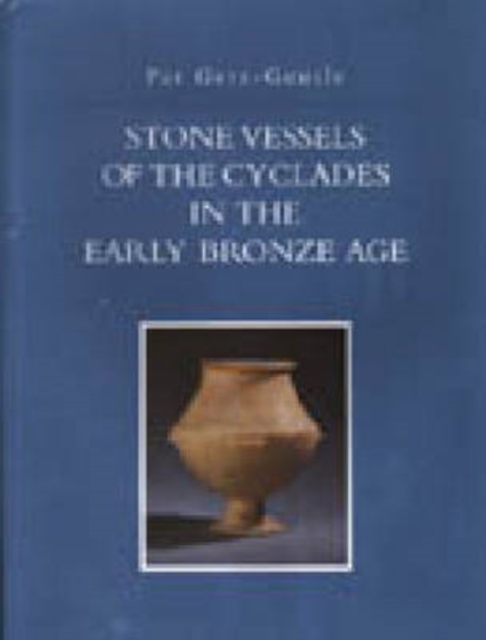
Stone Vessels of the Cyclades in the Early Bronze Age Hardback
by Pat Getz-Gentle
Hardback
Description
With the exception of early Egypt and Minoan Crete, no early culture had such a vigorous stone vase-making industry as the Cyclades.
Figures and vessels of stone, overwhelmingly of marble, are the most distinctive and appealing products of the Early Cycladic culture.
The vessels, like the better-known figures, formed a special class of object that conformed to a strict traditional typology.
Ranging from charming miniatures to works of impressive size, they often show a striking purity of form, beauty of material, and excellence in their workmanship.
Stone Vessels of the Cyclades in the Early Bronze Age is the first comprehensive study of these vessels. For each vessel type, Pat Getz-Gentle considers the material used, the size range, and the formal characteristics and the extent of their variation.
She also discusses manufacturing methods, the incidence of repairs occasioned by accidental damage, and the possible function or functions, as well as the development, frequency, dating, and distribution of each vessel type within the Cyclades and beyond.
She stresses the human element—how the vessels were used, held, and carried; how much they weigh; and how much they hold.
She examines the sculptors who made them—how they might have designed and executed their works, how on occasion they seem to have modified their original plans, and how they stand out as individual artists working within a traditional craft.
The 114 plates, with more than 500 separate photographs, illustrate works that show both the homogeneity and the diversity within each type.
Information
-
Available to Order - This title is available to order, with delivery expected within 2 weeks
- Format:Hardback
- Pages:536 pages, 10 Halftones, color; 114 Halftones, black and white
- Publisher:Pennsylvania State University Press
- Publication Date:15/11/1996
- Category:
- ISBN:9780271015354
Information
-
Available to Order - This title is available to order, with delivery expected within 2 weeks
- Format:Hardback
- Pages:536 pages, 10 Halftones, color; 114 Halftones, black and white
- Publisher:Pennsylvania State University Press
- Publication Date:15/11/1996
- Category:
- ISBN:9780271015354






